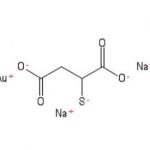
Contents
How Fast Does Prostate Cancer Spread?
Prostate cancer is a common type of cancer that develops in the prostate gland in men. In some cases, it spreads from the prostate to other parts of the body, typically the bones, over a period of up to eight years. However, it can be more aggressive in certain cases.
Prostate cancer usually occurs in men over the age of 50. The prostate is a small gland that produces fluid to nourish and transport sperm. Typically, the cancer is slow-growing and confined to the prostate gland, requiring minimal or no treatment.
In many cases, prostate cancer does not affect life expectancy. However, some types of prostate cancer can spread quickly to other parts of the body. Early detection of prostate cancer that is confined to the prostate gland leads to an excellent prognosis.
What Causes Prostate Cancer?
The exact cause of prostate cancer is unknown. It develops from cells with abnormal DNA changes in the prostate, which rapidly grow, invade surrounding structures, and metastasize to other parts of the body.
Risk Factors
Several factors increase the risk of prostate cancer:
- Age: The risk increases with age and is most common after 50 years of age.
- Race: African American men have a higher risk, and the cancer is more likely to be aggressive in this population.
- Family history: Having a blood relative with prostate cancer or a strong family history of breast cancer increases the risk.
- Obesity: Obese individuals have a higher risk, and the cancer tends to be aggressive and recurrent despite treatment.
- Smoking
Signs and Symptoms of Prostate Cancer
In the early stages, prostate cancer may not cause any signs or symptoms. Therefore, men over 50 years of age, with or without other risk factors, should consult a doctor for screening.
Later-stage symptoms may include:
- Difficulty urinating
- Weak urine stream or dribbling
- Blood in the urine
- Blood in the semen
- Bone pain
- Weight loss
- Erectile dysfunction
Early Detection of Prostate Cancer
Testing asymptomatic men for prostate cancer is controversial. However, doctors often recommend routine screening for men over 50 years old, especially those with risk factors. This is because early-stage prostate cancer often doesn’t cause symptoms. Routine screening allows for early detection and the possibility of complete cure.
Prostate screening tests may include:
- Digital rectal exam (DRE): A part of a physical examination in which a doctor examines the prostate by inserting a finger into the rectum to assess its texture, shape, and size. Numbing lubricant is used for comfort.
- Prostate-specific antigen (PSA) test: A blood test that measures the level of PSA, a substance produced by the prostate gland. Elevated levels may indicate prostate abnormalities. The test also helps monitor disease progression and response to treatment.
Diagnostic Tests for Prostate Cancer
If screening tests reveal abnormalities, the doctor may recommend additional diagnostic tests, including:
- Ultrasound: Trans-rectal ultrasound, which uses a small probe inserted into the rectum to visualize the prostate gland.
- Magnetic resonance imaging (MRI) scan
- Prostate biopsy: Collection of a small sample of prostate tissue using a thin needle inserted into the prostate.
- Metastasis Detection
If metastasis is suspected, the doctor may recommend additional tests, such as:
- Bone scan
- Ultrasound
- Computerized tomography (CT) scan
- Magnetic resonance imaging (MRI)
- Positron emission tomography (PET) scan of the entire body
Treatment of Prostate Cancer
Treatment options for prostate cancer depend on the tumor’s aggressiveness, whether it has metastasized, and the patient’s overall health. Treatment may involve a combination of modalities.
Treatment options include:
- Observation and follow-up: For low-grade prostate cancer that does not require immediate treatment, doctors may recommend observation and regular follow-up.
- Surgery: Prostatectomy involves the removal of the entire prostate gland. In some cases, surrounding tissues and lymph nodes may also be removed. Surgery can be curative if there is no metastasis and may be combined with other treatments.
- Radiation therapy: High-energy radiation is used to kill cancer cells. This is a good option when cancer is confined to the prostate.
- Cryotherapy: Freezing prostate tissue with cold gas to kill cancer cells.
- High-intensity focused ultrasound (HIFU): Focused ultrasound energy generates heat to cause cell death in the prostate tissue.
- Hormone therapy: Medication is used to suppress testosterone production or block testosterone’s action. Prostate cancer cells require testosterone to grow.
- Chemotherapy: Medications are used to kill cancer cells, including those that have metastasized.
- Immunotherapy: Modulates the body’s immune system to help fight cancer.
- Targeted drug therapy: Treatments that target specific abnormalities within cancer cells, blocking their growth.
- Pain management: Appropriate painkillers may be prescribed for significant pain caused by large prostate cancers and metastasis.
- Emotional support: Essential for coping with the emotional stress and depression associated with a chronic disease.
SOURCES
Medscape Medical Reference
American Cancer Society
American Cancer Society


